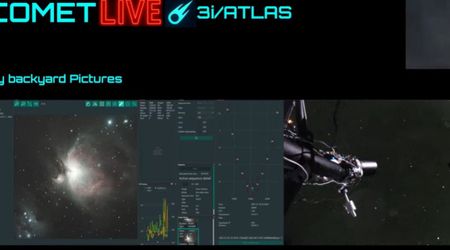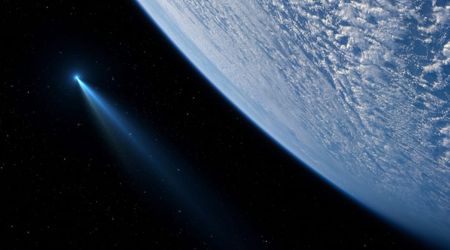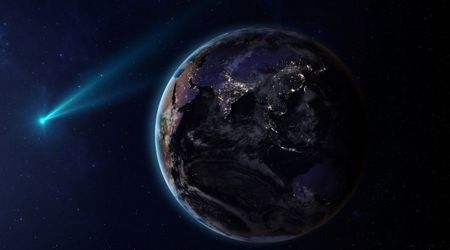Astronomers suggest gigantic 'lampshades' of dark matter may be hiding distant stars from our view

The quest to understand dark matter, the mysterious component making up an estimated 85% of the universe's mass, continues with a groundbreaking proposal. While dark matter's presence is primarily inferred through its gravitational influence on galaxies and stars, its interception with light is believed to be incredibly weak, rendering it largely invisible. However, a team of astronomers is now challenging this notion, suggesting that clumps of dark matter could act as "lampshades," faintly dimming the light of distant stars, as reported on Futurism.

Published recently in the journal Physical Review Letters, the research posits that even a minuscule interaction between dark matter and light, if accumulated over large enough dark matter clumps or "clouds," could be detectable by current telescopes. "While we usually say dark matter does not interact with light at all, making it totally transparent and invisible, the truth is, it is allowed to interact with light a tiny bit," said coauthor Melissa Diamond at Queen's University in Ontario, Canada. She further explained that "dark matter might form large clumps or clouds, often called MACHOs." According to her, "There may be enough dark matter in these MACHOs that their weak interactions with light collectively block light from passing through the cloud, like how a lampshade blocks some but not all light from getting through."

The true nature of dark matter remains a central mystery in modern cosmology. The leading theory suggests it consists of Weakly Interacting Massive Particles (WIMPs), hypothetical particles that neither emit nor absorb light and interact minimally with ordinary matter. However, attempts to detect WIMPs directly have so far been unsuccessful. This new study explores another dark matter candidate: Massive Astrophysical Compact Halo Objects (MACHOs). Unlike WIMPs, MACHOs are hypothesized to be made of ordinary matter, such as ultra-dense neutron stars or black holes. These objects typically emit little to no light, which would explain why they largely go undetected, especially if isolated in the outskirts of galaxies. It's also possible that dark matter is a mix of WIMPs and other candidates like MACHOs.
Astronomers have previously detected MACHOs using gravitational microlensing, a technique where the gravity of a massive object bends and brightens the light from a background star. However, microlensing has limitations; if the intervening object isn't massive enough or its matter is too spread out, its lensing effect might be too subtle to observe. "This is where the lampshade effect can make a big difference," Diamond noted. "While the clump might be too puffy to make for a good lens, it can still block some starlight, causing the star to dim instead of brightening." She emphasized that "the advantage of this technique is that it works for dark matter objects that are difficult or impossible to search for using available techniques," as mentioned by the outlet.

Crucially, the search for these "lampshades" can begin immediately using existing astronomical surveys like the Optical Gravitational Lensing Experiment (OGLE), without the need for new telescopes. "This technique lets us get new use out of existing data, and lets us look for new types of MACHOs that microlensing surveys might not otherwise be sensitive to," Diamond stated.
The potential implications of this research are significant. If "lampshade" detections are confirmed, Diamond said, we'd gain a stronger idea of what dark matter is. Conversely, if no such dimming is observed, it would help narrow down the list of dark matter candidates. Currently, skeptics of the MACHO theory argue that an insufficient number of these objects have been found to account for all of the dark matter. This new search method could provide vital data to help resolve one of the universe's most enduring enigmas.









